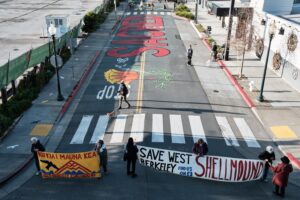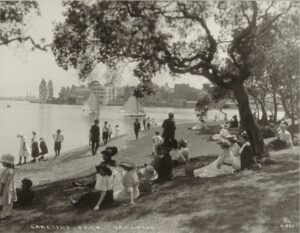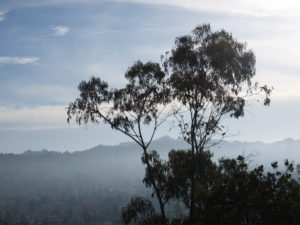I was working at my computer at the Bay Nature office in Berkeley the other day when I was interrupted by a short, sharp jolt. I looked around at the others working in the office: “Did you just feel that?” It turns out there had been a 3.4 quake centered two miles southwest of Orinda. Not much of a shake, and two of the six of us didn’t even feel it. But it was a timely reminder that the special earthquake centennial section we were working on for this issue was not just a matter of esoteric academic interest. I know some folks don’t relish reading about geology; it can certainly be a challenge to wrap one’s mind around huge changes taking place at the unimaginably slow pace of geologic time. But geology is the basis of everything else in the natural world, determining the way our landscape looks, and the habitats and plant communities that develop on it. Here in the Bay Area, geology is responsible for both the dramatic natural setting we are blessed with, and the constant threat of a formidable, life-threatening natural disaster.
I had been working at a different office on the afternoon of October 17, 1989, when the world really shook. In the midst of a meeting with two coworkers, the whole building in downtown Oakland suddenly began to shudder. Two of us ran for the door jamb and the other person ducked under the table just as rows of metal book shelves on both sides of the narrow office gave way, throwing several hundred pounds of books and magazines onto the table we had been sitting at just a moment before. I can’t forget the cold grip of fear in the pit of my stomach as the shaking grew more intense, and I had no idea if it would stop before the old building collapsed. As it turned out, the only damage at my office was the jumbled pile of shelves and publications, and some plaster off the ceiling. But there was more serious damage nearby, and the feeling of being utterly at the mercy of an elemental force of nature stuck with me for weeks. I can well imagine why people would feel that such a literally awe-inspiring experience must have a supernatural origin.
But earthquakes are a most “natural” event, the result of profound and comprehensible, if not completely predictable, forces operating under the surface of the earth. This is what I hope you will take away from “In the Fault Zone,” the special earthquake section in this issue. We live at the boundary of two of the earth’s great tectonic plates, and they’re not moving in the same direction. Instead, they are grinding past each other, dragging pieces from the other side with them, getting hung up for a time, but all the while being urged along their separate ways by inexorable currents deep in the earth’s mantle. When the rocks at the boundary can’t hold anymore, the two sides split apart, in very non-geologic time, sending shock waves up and down the length of the fault. When the fault is short, the resulting quake is like the small tremor we felt the other day. When the fault is over a hundred miles long, the result can be a small quake, or a large one—like the one on April 18, 1906. After a large quake, strain is relieved for a while, but it inevitably builds up again. By studying the intervals between these large earthquakes over time, seismologists are able to tell us that we’re due for another big one at any moment.
Of course, understanding these forces doesn’t protect us from their consequences. Because we can’t predict when a big temblor will strike, there is no way to guarantee that we won’t be in a vulnerable position—on a bridge, in a tunnel, under a scaffolding—when it does. But we can take steps to make ourselves and our homes less vulnerable. (See resource list on page 30.)
Indeed, such preparation really isn’t optional, unless we’re planning to move away from the Bay Area in the next week or two. Or unless we believe the government will be stepping in right away to take care of us in a disaster. Better to think of preparation as the steep cost of living in this incredibly beautiful corner of the planet. Come to think of it, the safest place to be when an earthquake strikes just might be on an open hillside, away from human structures. So why not take this as an invitation to spend as much time as possible this spring enjoying the copious blooms of wildflowers sure to be appearing any day now on our tectonically-active ridges and valleys, where you can be quite safe and filled with awe, even if the earth doesn’t shake.

.jpg)



